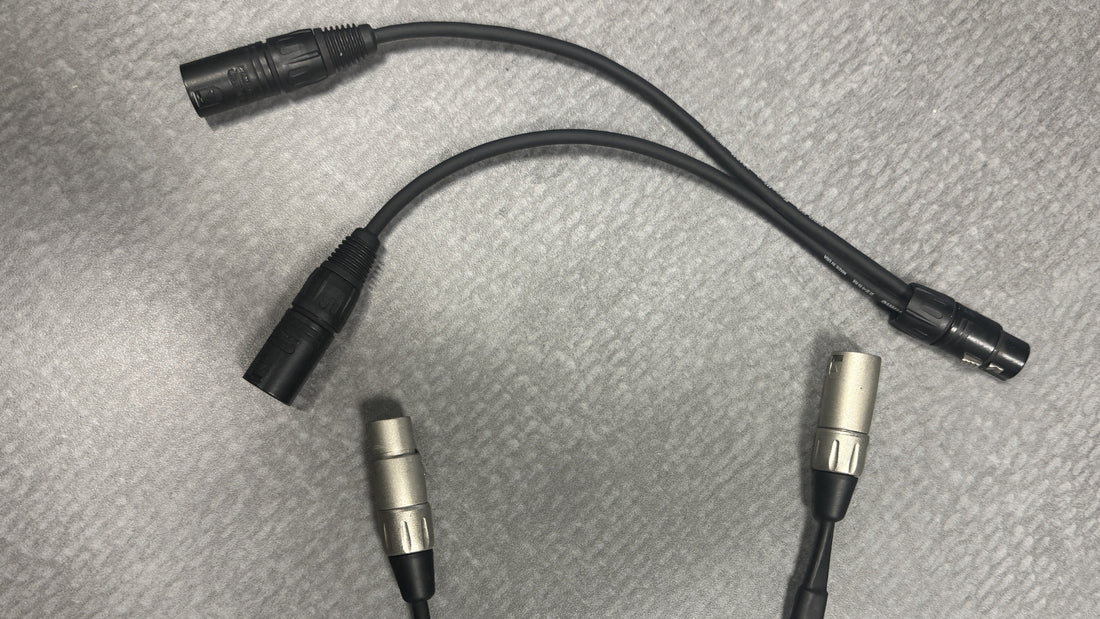
Wye Not? Why Using Wye XLR Cables is a Bad Idea
In live sound, little mistakes can turn into big headaches. One of the most common – and tempting – shortcuts is using wye XLR cables, like 1 male to 2 females or 1 female to 2 males. On paper, they look like an easy way to split or combine signals. In reality, they often cause more problems than they solve.
At a recent live event, we ran into a perfect example. Everything was running smoothly until, out of nowhere, the sound system started broadcasting a Spanish talk show. The band hadn’t invited a radio host, and nobody on stage was fluent enough to translate. After chasing the gremlins in the system, we found the culprit: a wye XLR cable.
Here’s what was happening:
- The cable had 1 female end plugged into the back of a Shure wireless mic receiver.
- That female end was soldered into 2 male connectors, one routed through the building and the other to the local mixer.
- By tying two outputs together this way, the cable created an unbalanced, high-impedance mess. That mess acted like an antenna, happily picking up AM 1040 and sending it straight into the PA.
Why Wye XLR Cables Cause Problems
- Signal Integrity – Audio lines are meant to carry balanced signals. A wye cable throws that balance out the window.
- Impedance Mismatch – Microphones and mixers expect specific load conditions. Splitting or combining with a passive Y cable confuses the gear.
- No Isolation – Proper splitters use transformers or distribution amps to keep circuits clean. Wye cables don’t, so interference spreads everywhere.
- Gear Damage Risk – In some cases, you’re literally forcing outputs to fight each other. Spoiler: the gear doesn’t win.
The Right Way to Do It
- Mic Splitting – Use an active splitter or transformer-isolated splitter when you need to send one mic to two places.
- Line Outputs – If you need multiple feeds, use a distribution amplifier.
- RF Mics – Always take the balanced XLR output directly to a mixer or stage box. If you need to feed multiple systems, split properly.
Takeaway
That wye cable at the event was trying to do too much with too little. The result? A surprise broadcast of late-night radio in the middle of the show. Funny in hindsight, not so funny in the moment.
So next time you’re tempted to grab a “quick fix” Y cable, ask yourself: Wye not use the right tool instead?
At W&L Sound, we design AV systems to impress – no shortcuts, no surprises, and definitely no unexpected talk shows.